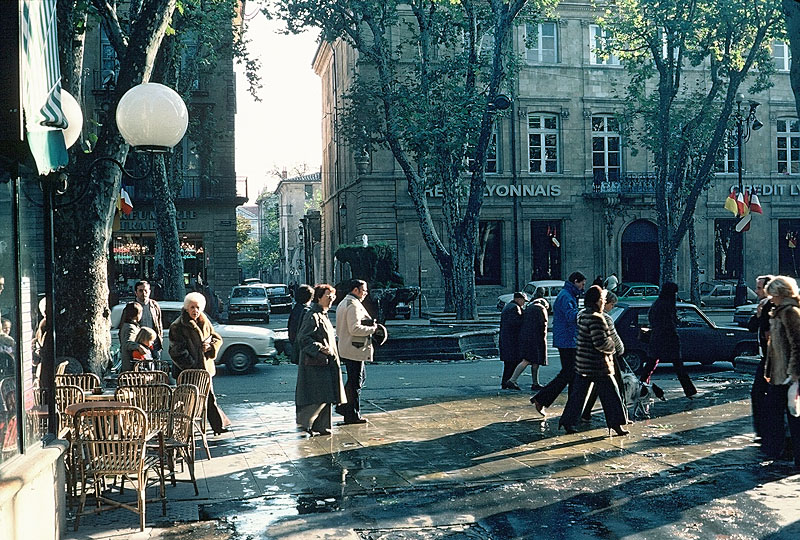
Fountain at intersection from rue, Clemenceau and Cours Mirabeau, Aix-en-Provence (capital of Provence region). The Cours Mirabeau is the main street of Aix famous for at its cafés.
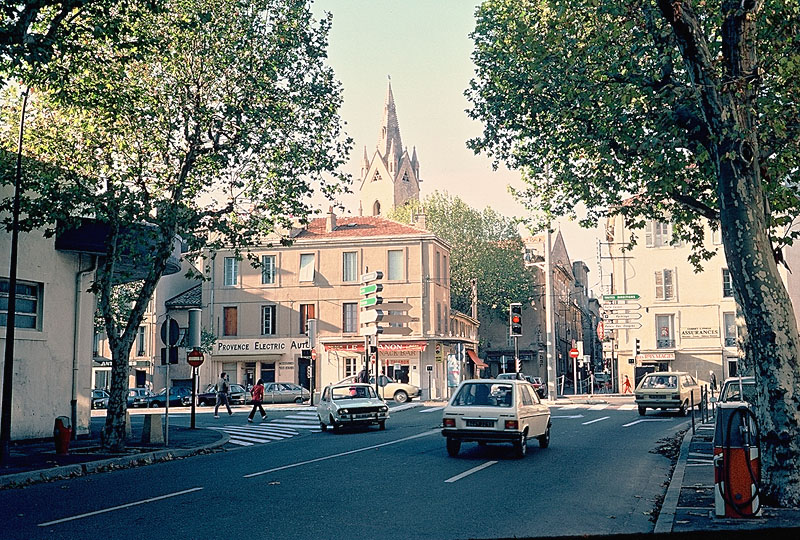
Saint John de Malle Church Intersection of streets Cours Mirabeau and Cours Gambetta, Aix-en-Provence. The church of the former priory of the Knights of Malta, which dates from the thirteenth century, was Provence’s first Gothic building.
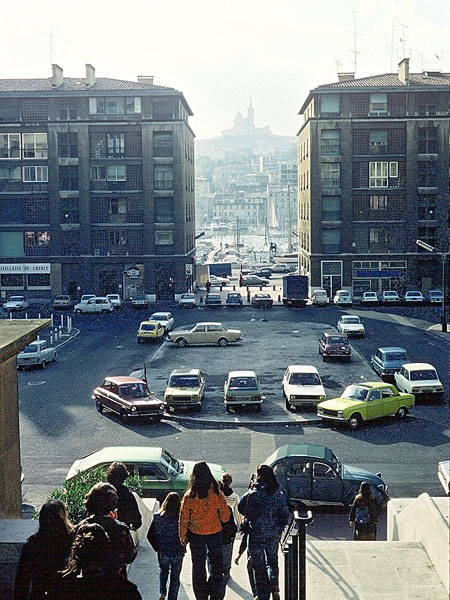
View of Bay between buildings with church barely visible on hill in background, Marseille, which is the third-largest city in France. This bay is very close to sites featured in The French Connection, a 1971 American film.
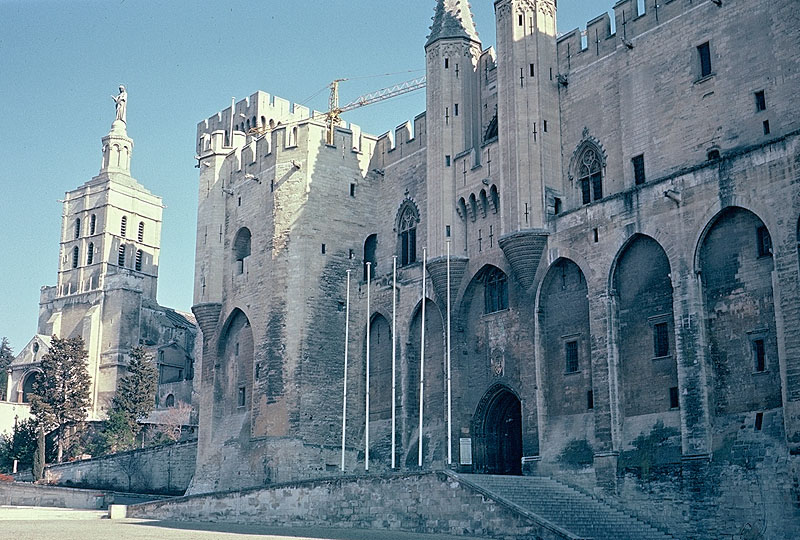
Pope’s Palace, Avignon. The old stone palace served as a fortress and as a palace for the popes of the Catholic church. For sixty-eight years (1309–1377), it served as the residence of the first of seven French popes, then three others once Pope Gregory XI took the papacy back to Rome in 1377. Papal legates remained here until Avignon was reunited with France in 1791, not long after the building was damaged and interior looted during the French Revolution.
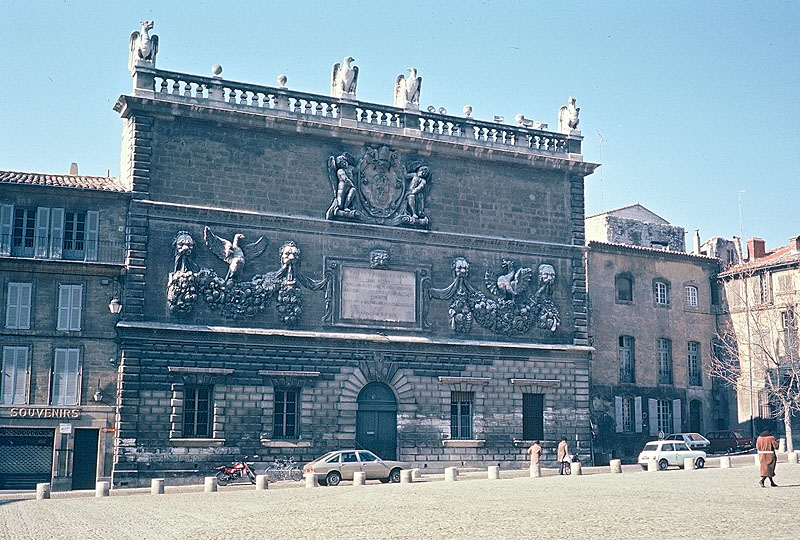
Pope’s Palace Square, Avignon. The Palace Square is currently home of the unique Museum of Medieval Painting and Sculpture, and during the papacy it was home of the archbishop and cardinals. This is a view of the ornate wall that was remodeled after the heyday to reflect Renaissance style decorations.
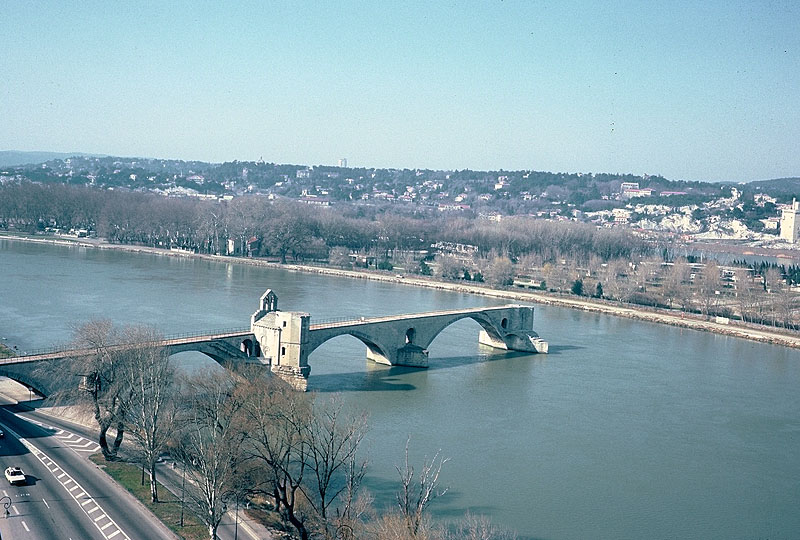
View of St. Bénézet bridge on Rhone River, Avignon Begun in 1177, according to legend by the sheperd boy, Bénézet himself who heard voices from an angel to build it and was founder of the Bridge Brotherhood. Until the Brotherhood completed the final version of St. Esprit Bridge, it was the only stone bridge over the Rhone. The bridge of the song which spanned the river by way of an island helped in the economic development of Avignon and originally had twenty-two arches instead of current four.
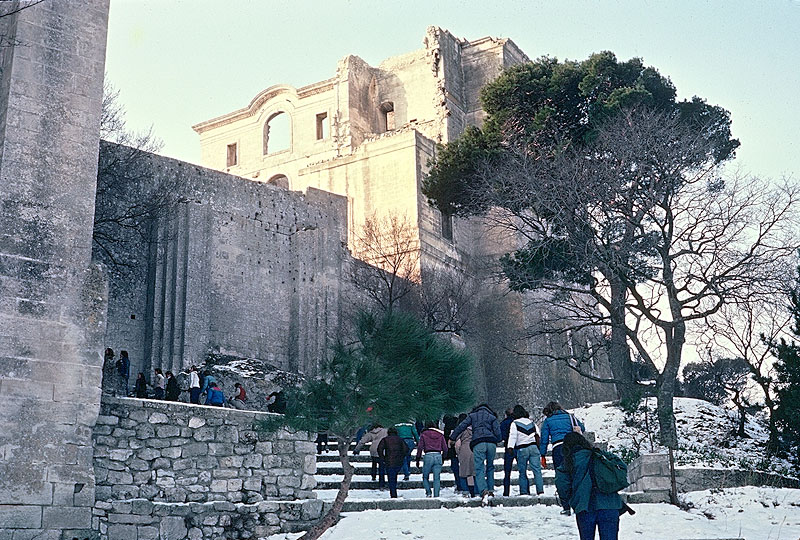
Montmajour abbey in winter. Abbey was founded in the tenth century by Benedictine monks and prominent until the seventeenth century. After some reconstruction in early eighteenth century, Louis XVI suppressed the abbey in 1786.
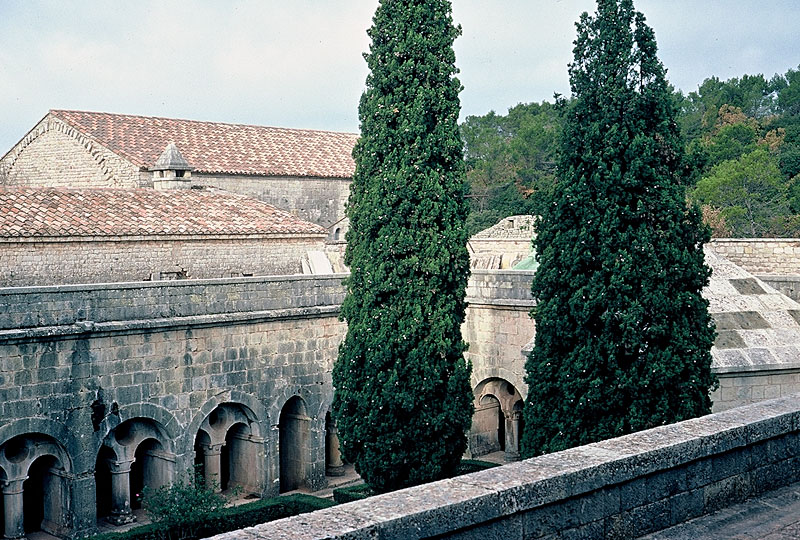
View of cloisters at Le Thoronet Monastery, Provence. The Cistercian and church abbey were founded in 1136 when St. Bernard was still alive and reflects plain architecture of the times.
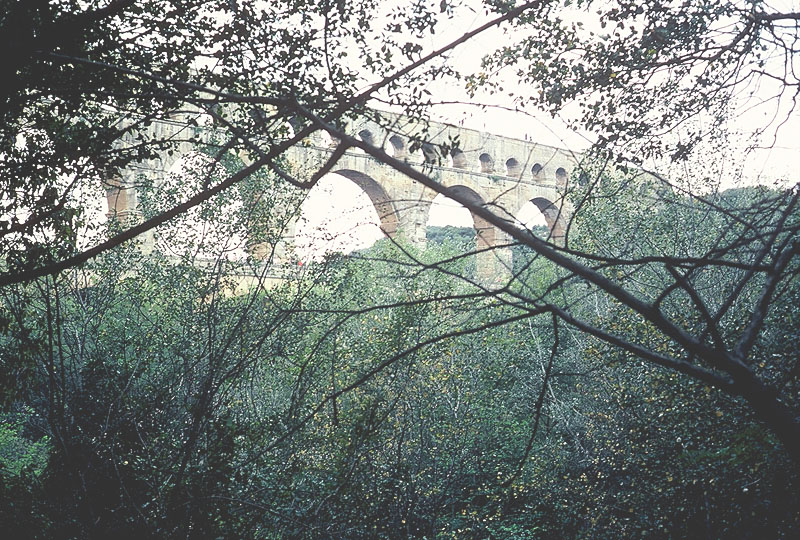
Picture of the aqueduct, the Pont du Gard behind branches. The Gard aqueduct, constructed in 18 BC as one of the principal sources of supply of the city of Nîmes, is an example of the strong Roman influence in Provence. At its maximum, the daily flow was forty-four million gallons. The length was originally fifty kilometers, yet every time Nîmes was besieged, the aqueduct was cut shorter. From the fourth century it ceased to be maintained so that lime deposits built up until finally by the ninth century it fell into disuse. In the nineteenth century after a millennium of neglect, it was restored by Napoleon III.
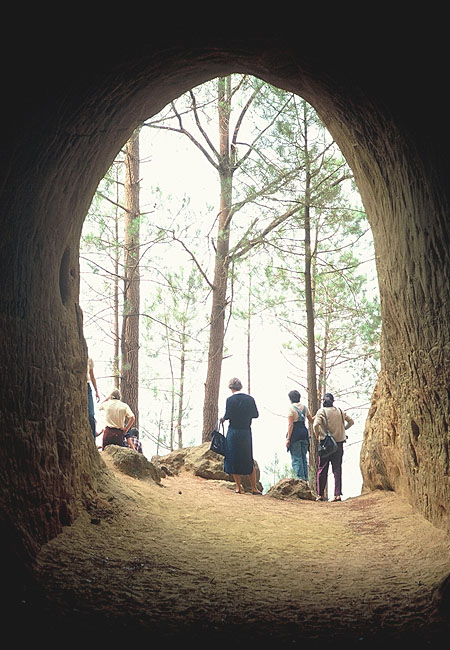
Picture looking out from cave in Rousillon. The village of Rousillon stands in an unusual site on the highest of hills between the Coulon Valley and the Vaucluse Plateau. The hills are composed of ochre rock of over a dozen different shades all reflected in the stone houses and in the terrain. The reddish soil of the cave near the village is an example of the ochre. There is an area of cliffs known as Needle Rocks, ochre quarries, and rustic walking paths.
